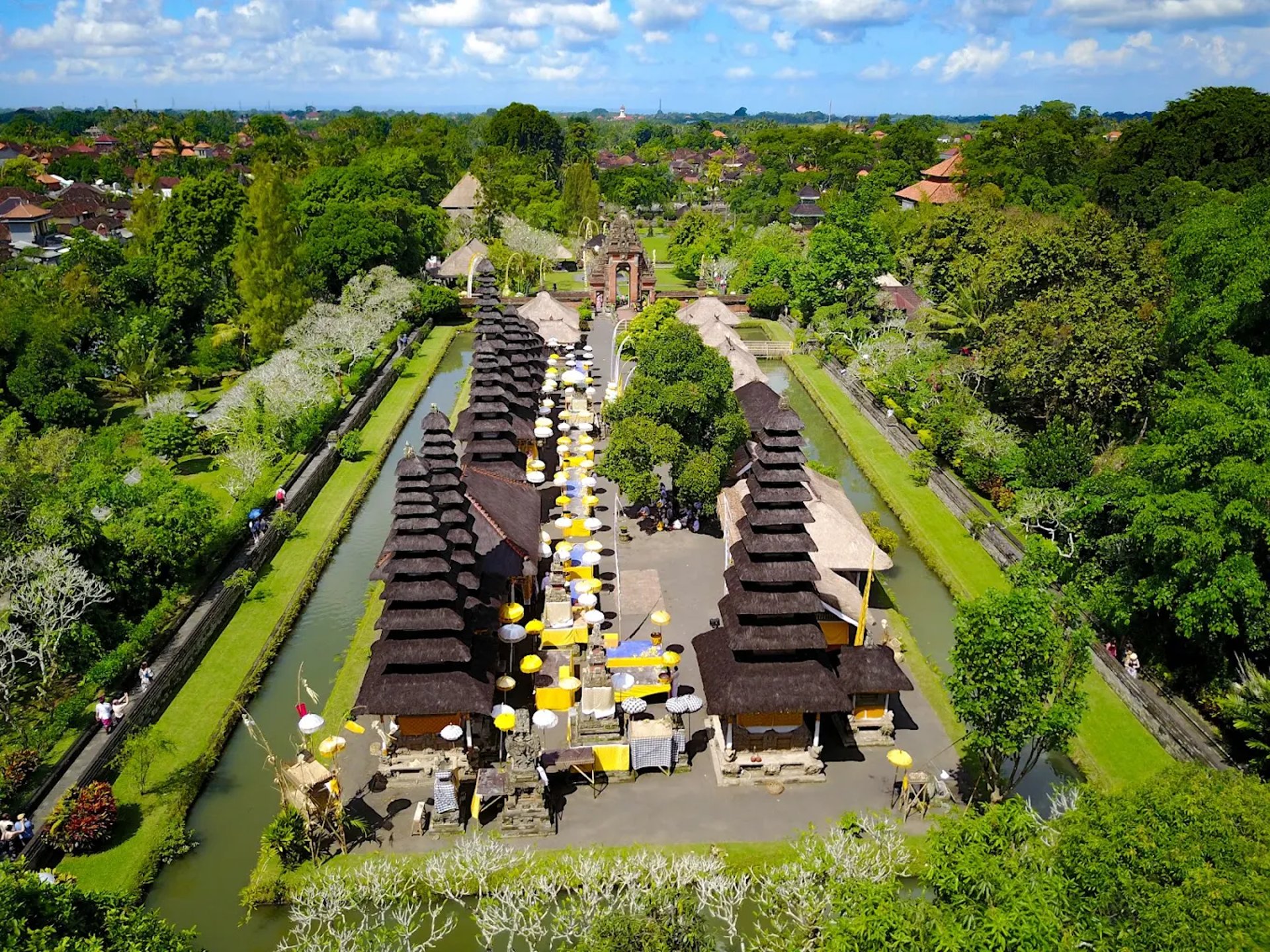
Taman Ayun Temple
Located in Mengwi, Bali, Taman Ayun Temple is a historical royal family temple renowned for its classical Balinese architecture, tranquil gardens, and cultural significance. As part of a UNESCO World Heritage Site, it offers a unique insight into the island’s spiritual and architectural heritage.
About Taman Ayun Temple
Taman Ayun Temple, also known as Pura Taman Ayun, is one of the most architecturally distinguished temples in Bali. Located in the village of Mengwi, in the Badung Regency, the temple complex is situated approximately 19 kilometers northwest of Denpasar and is easily accessible from major destinations such as Ubud, Seminyak, and Canggu. Originally constructed in 1634 by the ruling monarch of the Mengwi Kingdom, King Gusti Agung Putu, Taman Ayun served as the royal family temple. The name "Taman Ayun" translates to "Beautiful Garden," a reflection of the temple's tranquil setting and elegant layout.
The temple complex exemplifies classical Balinese architecture, incorporating a harmonious blend of spirituality, symbolism, and landscape design. Surrounded by a wide moat that gives the impression of a floating structure, the temple grounds are divided into three distinct areas, symbolizing different levels of spiritual hierarchy in Balinese cosmology. These zones—ranging from the outer courtyard to the innermost sanctum—are aligned with the principles of Tri Mandala, the Balinese architectural philosophy that divides space into three realms. The inner courtyard houses a series of multi-tiered shrines, or meru, dedicated to Hindu deities and deified royal ancestors, some of which rise as high as eleven levels, indicating their sacred significance.
Taman Ayun is also notable for its integration into Bali’s traditional Subak irrigation system, which reflects the Tri Hita Karana philosophy—a Balinese concept that emphasizes harmony between human beings, nature, and the divine. In recognition of its cultural and environmental importance, Taman Ayun was inscribed in 2012 as part of the UNESCO World Heritage Site known as the Cultural Landscape of Bali Province. The temple’s connection to the Subak system underscores its role not only as a place of worship but also as a vital component of the island’s historical water management infrastructure.
Visitors to Taman Ayun will find a well-preserved site that maintains its original function as an active temple, while also serving as a point of interest for those wishing to understand Balinese religious practices and royal history. The temple compound is immaculately maintained, offering visitors a quiet and contemplative atmosphere. Nearby cultural facilities, including the Ogoh-Ogoh Museum and other interpretive displays, provide further insight into Balinese Hindu rituals and ceremonial traditions.
Taman Ayun Temple is open to the public daily, with an affordable entrance fee. Visitors are required to dress respectfully, in keeping with customary etiquette for entering sacred spaces in Bali. Sarongs and sashes are typically available for rent or provided at the entrance. Due to its cultural significance and serene setting, the temple is often included in day tours from Ubud or South Bali, particularly as part of a route that also includes other landmarks such as Alas Kedaton and Tanah Lot.
As an example of royal temple architecture, cultural continuity, and environmental harmony, Taman Ayun stands as a distinguished heritage site within Bali’s spiritual landscape. It offers a compelling experience for those interested in history, architecture, and the living religious traditions of the island.
Taman Ayun Temple
Explore the beauty and history of Taman Ayun Temple, surrounded by serene gardens and a tranquil moat in Mengwi, Bali.
The temple is open daily from 8:00 AM to 6:00 PM. Entrance is IDR 30,000 per adult and IDR 15,000 per child; fees may be subject to change.